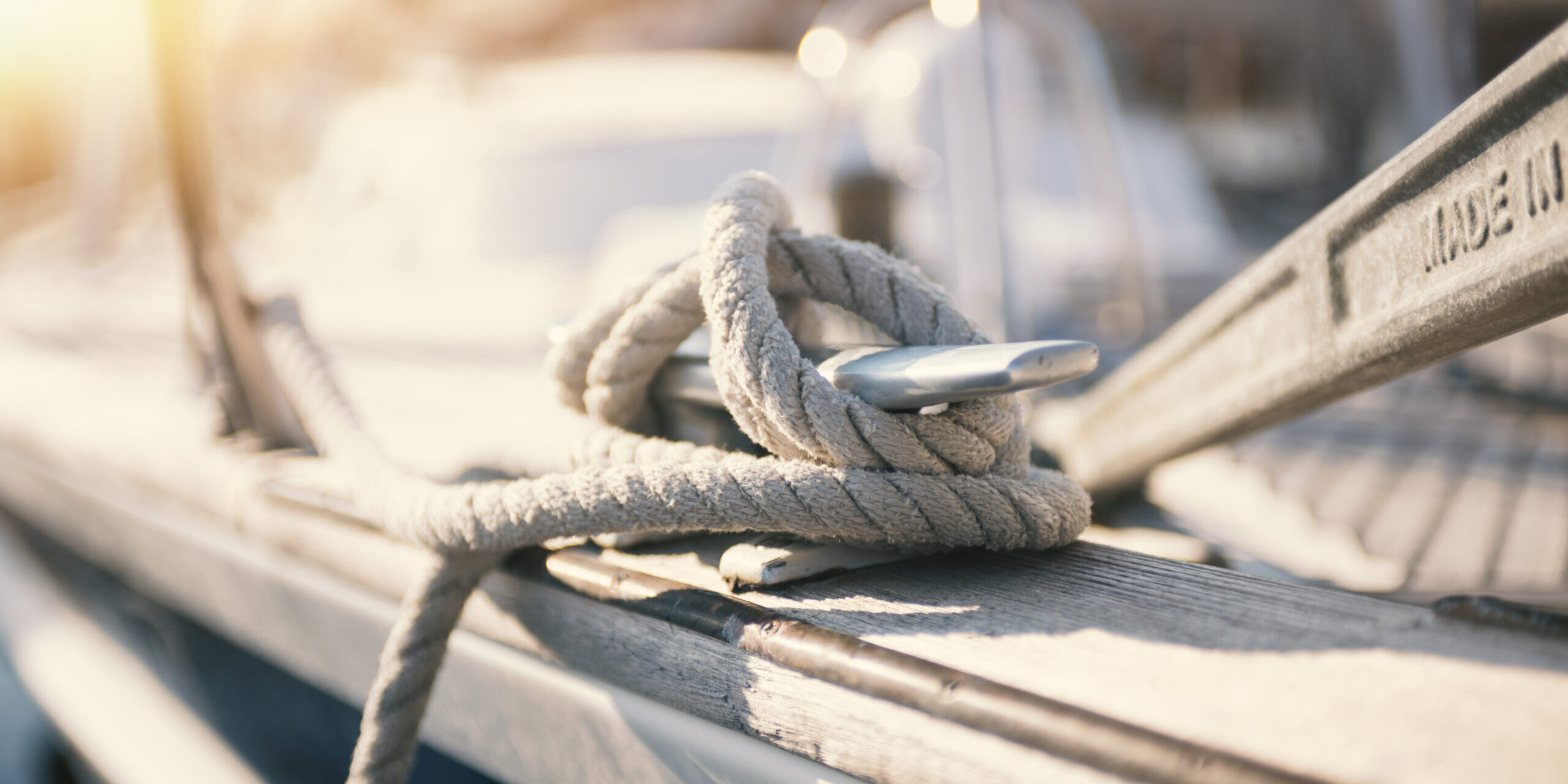Need to secure your boat but not sure which equipment will work best for you? In this guide from our mooring experts, discover the key types of mooring equipment, and how to decide which option might be right for you.
Anchors
One of the most recognisable types of mooring equipment is the anchor. Traditional and distinct, anchors are lowered from a ship to the sea floor, where their weight will prevent the attached ship from moving. When the boat is ready to be moved off, the anchor can then be raised back up to the ship with ease, making anchors a great permanent solution for boats that works for years to come.
Mooring anchors come in various types, including mushroom anchors, claw anchors and Delta Flipper anchors. Each type of anchor is designed for a specific application, such as anchoring to a sandy sea bed or digging into rough bottoms with plenty of ridges and cracks.
Buoys
Floating on the water, buoys are another key type of mooring equipment that are easily seen. These options are used in the place of anchors, allowing the boat to be tied and secured. The floating element of a buoy is connected to an anchor with a chain or a rope, preventing it from straying.
Similar to anchors, mooring buoys are available in a variety of forms. These generally fit in one of two categories, whether a Single-Point Mooring Buoy or Multiple-Point Mooring Buoys. Of these two key options, Multiple-Point Mooring Buoys are generally more stable and secure, as multiple buoys will be used and secured to one another.
Bollards
Typically found in ports and harbours, mooring bollards are another key type of mooring equipment. Also known as marine bollards, these features are large and incredibly stable, providing a secure point for mooring lines to be tied to. They are cost-effective and simple, as they are fixed to the floor and are designed to withstand the impact of any waves or harsh weather conditions.
Unlike pedestrian bollards, mooring bollards are typically designed with a curve. This curve can prevent the rope or chains from slipping off, which would unsecure the ship. Marine bollards do come in a wide range of shapes and sizes, however, each is designed for specific conditions. The T-head bollard, for example, is one of the recognisable types, thanks to its large size and ability to moor big boats.
Which is right for you?
The mooring equipment best suited to your needs will usually depend largely on where you intend to use it. For example, buoys are typically a great option in areas where deploying an anchor might harm the seabed or the sealife below. Our team at Atlas Winch Hire & Hoist Services can help you find the perfect option, by providing expert advice.
Your Trusted Supplier of Mooring Equipment
If you’re looking to secure your boat, whether out at sea or in a dock, let Atlas Winch Hire & Hoist Services provide you with everything you might need. We offer a variety of mooring equipment, in addition to much needed deck equipment and utility equipment. Please visit our website to discover more about us and our services at Atlas Winch Hire & Hoist Services. Alternatively, for quotes and further information, please contact us directly.








